Search Results
Filter by Topic
How to Get a J-1 Exchange Visitor Visa
Understand the basics of applying for a J-1 Exchange Visitor Visa
General Immigration Information
The purpose of the J-1 visa, also known as an Exchange Visitor visa, is to develop a global understanding through educational and cultural exchanges, especially in the arts, sciences, and education. All J-1 visa holders are expected to return to their home country to share their new experiences and knowledge. This program is not intended as a path for immigration, but it is a great path for foreigners who would like to have a long-term experience in the United States.
What is a J-1 Exchange Visitor Visa?
A J-1 visa is a non-immigrant visa issued by the United States to research scholars, professors and exchange visitors participating in programs that promote cultural exchange, especially to obtain medical or business training within the U.S. All applicants must meet eligibility criteria, English language requirements, and be sponsored either by a university, private sector or government program.
The J-1 classification is assigned to foreigners participating in an approved program for teaching, instructing or lecturing, studying, observing, conducting research, consulting, demonstrating special skills, receiving training, or receiving a graduate medical education or similar training.
Common examples of exchange visitors include, but are not limited to:
- Teachers
- Students
- Research assistants
- Government visitor
- Trainees
- Professors or scholars
- Specialists
- Nannies/Au pairs
- Camp counselors
Am I eligible for a J-1 visa?
Before you decide to apply for a J-1 visa, you should make sure that you are eligible. Sponsors will have specific eligibility criteria for their program. In addition to this, all exchange visitors must meet the language and insurance requirements, meaning that participants must be proficient in the English language and that participants and their accompanying family members must have medical insurance with a minimum benefit requirement. Your sponsor will provide you with pre-arrival information and a post-arrival orientation with program-specific information and any contractual obligations, in addition to monitoring your progress and well-being during your stay. You should contact them with questions about the English proficiency and insurance benefit levels required for your program.
Who Qualifies for the J1 Visa?
How much does it cost to apply for a J-1 visa?
In addition to meeting eligibility criteria, you are required to pay certain fees. You will need to pay the $160 nonimmigrant visa application processing fee, unless you are sponsored by the U.S. government in which case the fee is exempt. This fee needs to be paid before your interview, and you will need to provide a receipt showing the fee has been paid. The program sponsor should also tell you if you must pay a SEVIS I-901 fee to the Department of Homeland Security (DHS), but often the sponsor will pay the fee for you. If your sponsor pays the SEVIS, they will provide you with a receipt confirming payment. Be aware that there may be other fees for your program, such as an application processing fee.
How do I apply for an exchange visitor program?

Applying for any visa is a complicated task, but the process for a J-1 visa can be broken down into 3 basic steps.
1. Find a Sponsor
You first need to find a program and a sponsor. The U.S. Department of State (DOS) is responsible for the Exchange Visitor Program, and they approve public and private organizations to act as sponsors for exchange visitors. All approved options are on the designated sponsor list. First, decide on a program, and then research the listed sponsoring organization. Each sponsor will have a different application process so call their office or search their website for more information.
Remember that your sponsor is vital to your experience as an exchange visitor. They should provide you with the information necessary to successful complete your program and to smoothly transition to living in the U.S. Additionally, your sponsor also has the ability to terminate your participation with the approval of the DOS. Be smart when selecting a program and a sponsor to ensure your needs and goals align with their services.
2. Receive a DS-2019 Form
Once a sponsoring organization accepts your application, they will send you a Form DS-2019, also known as a Certificate of Eligibility for Exchange Visitor Status. This form permits a prospective exchange visitor to schedule an interview at a U.S. embassy or consulate to obtain a J-1 visa to enter the United States. The Form DS-2019 also provides a brief description of the exchange visitor’s program, including the start and end date, category of exchange, and an estimate of the cost of the exchange program.
You should work closely with your sponsoring organization who will help you through the application process. An official who is authorized to issue Form DS-2019 is known as a Responsible Officer (RO) or Alternate Responsible Officer (ARO). The RO or ARO in your sponsoring organization will explain what documents are needed from you in order for them to issue you a Form DS-2019.
3. U.S. Embassy or Consulate Application
After you have obtained a Form DS-2019, you may then apply for a J-1 visa through the U.S. Department of State at a U.S. embassy or consulate.
You will need to do 3 things to apply:
- Complete the online J-1 Visa application (DS-160).
- Print the application form confirmation page to bring to your interview.
- Pay the nonimmigrant visa application processing fee.
- Gather required documents (list below).
- Attend an interview at a U.S. embassy or consulate (if you are age 14 through 79, with exceptions).
The waiting time for an interview appointment for applicants can vary, so submit your visa application as early as possible. Remember, though, that you may not enter the United States in J-1 status more than 30 days before your program begins.
During your visa interview, the officer will determine whether you qualify for the visa. You should also expect your fingerprints to be taken (ink-free). You will need to establish that you meet the requirements under U.S. law to receive the category of visa for which you are applying by showing the required documentation. After your interview, your application may need further processing, and you will be informed by the officer if this is the case. When the visa is eventually approved, you will be informed how your passport with your visa will be returned to you. Be sure to plan ahead because you may not receive your visa right away.
Here is a list of required documents you need to bring to the interview:
- Your Form DS-2019 (Certificate of Eligibility) issued by your program sponsor.
- A valid passport (note: must be valid for at least six months beyond your program end date).
- A printed out Form DS-160 confirmation page.
- A receipt showing payment of the visa application fee (note: this fee in non-refundable)
- A 2×2 photograph that meets format requirements.
- Other supporting documents – check the specific embassy or consulate website
Note that all trainee or intern applicants also submit a Training/Internship Placement Plan, Form DS-7002.
For most detailed information on the application process, visit the Bureau of Consular Affairs’ exchange visitor visa website or the Department of State’s exchange visitor program website. For information on making a visa interview appointment, paying the application processing fee, and more, visit the U.S. embassy or consulate website where you will apply for your visa.
How long can I stay in the United States with a J-1 visa?

You are allowed to stay in the United States up to 30 days after your program end date. If you do not leave on time, you may be ineligible for visas in the future. Additionally, if your sponsor terminates your participation for just cause, you will be expected to depart the United States immediately. You will not be entitled to the post-completion 30-day period because you did not successfully complete your program.
If your visa expires during your program period and you do not plan to travel outside of the U.S., you do not need to renew the visa. If you travel outside of the United States when your visa is expired, you will have to apply for a new J-1 visa in your home country. Note that your sponsor is responsible for helping you with everything related to your J-1 program, including authorizing travel outside of the U.S. and ensuring that your J-1 non-immigrant documents are valid. Contact your sponsor if you are concerned about your visa.
Remember, your current J-1 visa is only applicable for your current program and sponsor. When you complete your program, you are expected to leave the United States. If you intend to pursue a 2nd J-1 exchange program (in a different category and with a different J-1 sponsor), you will need to apply for a new J-1 visa for the new program to re-enter the U.S. for the 2nd program.
Additionally, if any of the following describe your program, you are subject to a two-year home-country physical presence requirement, meaning you will be required to return to your home country for two years at the end of your exchange visitor program.
Two-year Home-country Physical Presence Requirement Conditions:
- Government-Funded Exchange Program.
- Graduate Medical Education or Training.
- Another Program of Specialized Knowledge or Skill
Note: There is a possibility of waiving this last requirement.
What is the duration and extension period for a J1 visa?
How do I extend or adjust my exchange visa program?
To extend your program, you must discuss it with your sponsoring organization. If your sponsor agrees to extend your program, they will send a new Form DS-2019 with the new end date and any other necessary information. The sponsoring organization will apply for your extension through the Department of State. Note that there is a nonrefundable fee of $367 which your sponsor may have you pay. Contact your sponsor if you would like to extend your program.
Can I change my status while on a J-1 visa?
While in the United States, you may decide that you would like to switch to a different visa status, such as a change from a J-1 visa to an F-1 visa. If you would like to change your J-1 nonimmigrant status to a different one, you will first need to work with your sponsoring organization and receive a new Form DS-2019 and submit that form with your Form I-539, Application To Extend/Change Nonimmigrant Status to the USCIS. There is a $370 filing fee with this application.
Is a J-1 Visa Holder Eligible to apply for a Green Card?
Can I work on a J-1 Visa?
Follow the guidelines in your program description. If your exchange visitor program is a work-program (research, teaching, etc.), work only under the terms of the specific program. In some situations, J-1 holders may work for non-sponsor employers if they meet eligibility requirements. Contact your sponsor with any work-related questions.
Can my family come with me?
Your spouse and any unmarried children under 21 years of age, regardless of nationality, are entitled to J-2 classification. Your family will apply for their J-2 visas while you are applying for your J-1 visa, and the process is very similar. Contact your sponsoring organization or the U.S. embassy or consulate at which you will apply for more information.
Sometimes, exchange programs will not allow family to accompany J-1 participants. If this is a concern for you, ask potential sponsors about this before you apply.
With regards to work, your spouse and children can be authorized to work in the United States. However, their income may not be used to support you. To apply for work authorization as a J-2 nonimmigrant, your spouse or child should file Form I-765, Application for Employment Authorization. Form I-765 will ask for your eligibility category; for J-2 participants it’s (c)(5).
Have any questions?
Post your questions to the J Visa section of the discussion board.
Or you can schedule a free consultation with an immigration attorney here.
How Do I Find My Form I-94?
Instructions on how to access your Form I-94, Arrival/Departure Record
Frequently Asked Questions
As a foreigner, upon entering the United States you will receive the Form I-94, Arrival/Departure Record. This document, issued by a Customs and Border Protection (CBP) Officer, provides you basic information about your stay such as your arrival date, visa status, and the date you are required to leave the U.S.
There are now two formats in which you may receive your Form I-94 - paper and electronic - but as of April 30, 2013, most Arrival/Departure Records are created electronically. In this case, you will be given an annotated stamp in your passport instead of a paper form. If you are provided a paper Form I-94, a CBP officer attaches it to your passport and stamps your departure date on the form.
Although an electronic version cuts down on paper and drastically decreases the possibility of losing your document, it can be slightly more complicated to access, especially if it's your first time locating your record. Don't worry though - here's a guide on how to access your electronic Form I-94, along with a few useful tips and tricks.
How to Access Your Form I-94
To access your I-94 record, go to CBP's website. Once there, click on the Get Most Recent I-94 button. A page will then pop up requiring you to agree to the following terms before continuing: "By accessing this website, you understand and acknowledge that: You are declaring under penalty of perjury pursuant to 28 U.S. Code § 1746 that you: (1) are only seeking records about yourself, (2) are seeking records about someone for whom you are the legal guardian, or (3) you have the consent of the person whose records you are seeking. You are not authorized to access this website to retrieve records of another person unless you are the person's legal guardian or you have the person's consent." After consenting, you will see a page similar to the screen shot below. Enter the required information.
I-94 Website Travel Records for U.S. Visitors - U.S. Customs and Border Protection
[caption id="attachment_2080" align="aligncenter" width="800"]
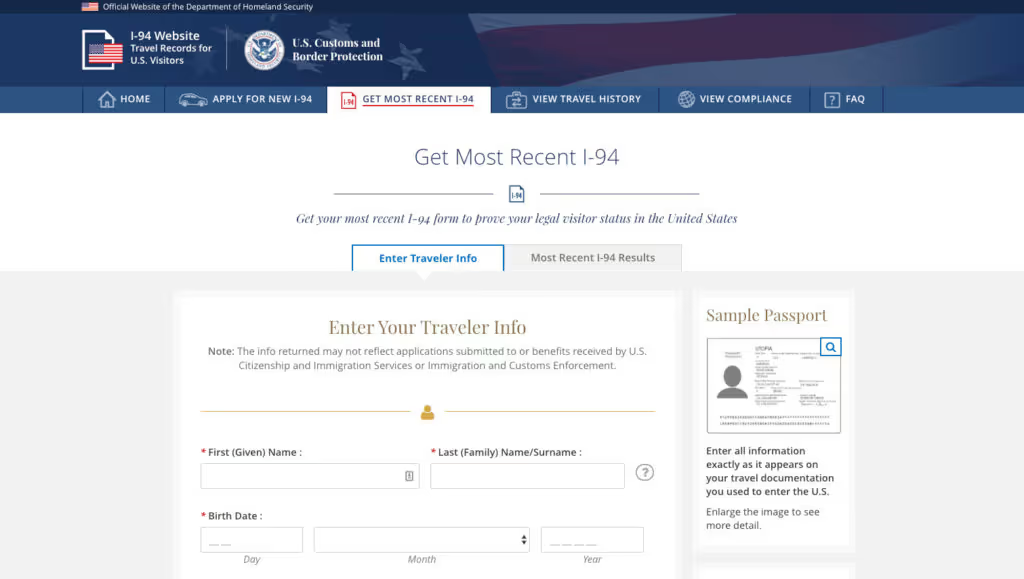
I-94 Website Travel Records for U.S. Visitors - U.S. Customs and Border Protection[/caption]
Entering the data in the required fields, if done correctly, will allow you to access your electronic Form I-94. However, all information must be entered accurately; even one simple misspelling or formatting error will prevent you from accessing your record. If you're having trouble accessing your record, try the following troubleshooting tips.
Enter your name exactly as it is written on your passport. If this does not work, attempt to enter your name in a different format.
- Check your visa, airline ticket, boarding pass, or your submitted Form DS-160, Online Nonimmigrant Visa Application (if available) for any variations in the spelling of your name. If there are differences, try entering each one as they appear on these documents.
- In some countries, the first name may be written as the last name on the passport. If this is the case, try switching the order of your names.
- Your passport may include both your first and middle name, but your electronic Form I-94 may list these both as your first name. It's also possible that your middle name is not included in the electronic record. Pay attention to these details.
- If your name is hyphenated, and you cannot gain access to your electronic I-94 by entering your name as it appears, remove the hyphen and try again. Likewise, if you have two first or last names with a space between them, such as "Mary Anne," try entering them without a space as "Maryanne."
- Each name field has a 25-character limit. If your name exceeds 25 characters, try entering it without any spaces as far as it will allow you.
Check Your Passport
Consider multiple entry options for your passport number.
- If both letters and numbers appear in your passport number, try entering a space after the letter(s). For example, if your passport number appears as LR573892 on your passport, try entering it as LR 573892.
- If the date your passport was issued is part of the passport number, try removing these digits when you enter it in.
- If you have a Mexican passport, try entering your passport number without the first two digits. You can also try removing the last two digits.
- If the valid visa is in an expired passport, try entering the old passport number instead of the new one used for entry.
- Sometimes the passport booklet number differs from the number listed on your bio page. Try both.
If You Still Can't Access Your Form I-94
If you still cannot access your electronic Form I-94 after trying the above tips, the next step is to call or visit your local CBP deferred inspection office. Some offices can solve most problems over the phone, but others may require an in-person visit.
How to Renew a Missing Green Card
Information on how to request a green card replacement.
Green Card Renewals, Replacements and Removal of Conditions
First of all, don’t panic. You can notify the police department in the jurisdiction where you lost your card to obtain a police report. If that doesn’t turn up anything, you simply have to renew your green card to get a new one. On the bright side, if you’re a permanent resident, your new green card will last for another 10 years, so you won’t have to renew it again for a long time. (If you have conditional permanent resident status, your green card is only valid for 2 years.) However, the process will take approximately 5 months, so there will be a period where you do not have a green card. Be aware that 5 months is an approximation, some cases will take more time to be resolve and some will take less.
How to Replace a Missing Green Card
Follow the steps below to apply for your replacement green card:
1. Fill out Form I-90, Application to Replace Permanent Resident Card
You may file Form I-90 online or by mail. Carefully fill out the form with all the appropriate information. If you are worried about filling out the form out correctly or want the help of an immigration attorney, you can use SimpleCitizen to prepare your renewal application here. Either way, watch out for these three common mistakes:
- Not submitting all required evidence (copies or uploads of official documents)
- Not paying the fees (Filing fee of $465 for paper filings and $415 for online filings, with some exceptions).
- Not signing your application (or not e-signing it if you file online)
If any of these steps are skipped when submitting your application, your case will likely be rejected or denied. If you are financially unable to pay the fees, you may be eligible for a waiver. You may request to waiver them by filing Form I-912. Once USCIS receives your application, they will send a receipt notice of your Form I-90 by mail at the address you provided on your application. It will also be posted to your USCIS Online Account. You should expect to receive the receipt approximately 2-3 weeks after filing. Once you've received the receipt, you can track the status of your application here.
2. Biometrics Appointment
About 3-5 weeks after filing Form I-90, you should receive a Form I-797C Notice with your biometrics appointment date and time. There will also be other instructions about the appointment. For example, you’ll be required to bring a photo ID, such as a passport or a driver’s license. Pay attention to the information, and do not miss your appointment if possible. You will not receive a green card without going to an appointment. At your biometric services appointment, which will be approximately 30 minutes long, the staff will take your fingerprints, photograph, and signature. For more about what happens at the biometrics appointment here.
3. Request for Additional Evidence (Only in Some Cases)
Sometimes USCIS will request additional information through a Form I-797E. If you receive this, simply mail the required evidence or upload it to your USCIS Online Account within the time period provided. In some cases, USCIS may request an interview with you as well.
4. Receive Your New Green Card
The USCIS will mail you another Form I-797 notifying you of their decision on your case. You’ll know whether you case was approved or denied. There will also be a copy of this notice in your USCIS Online Account. If your case was approved, you should receive your replacement green card soon after.
If You Need Proof of Residence Within the Next 5 Months
You may need proof of residence during the 5-month wait for your green card. If so, make an appointment with the local USCIS field office through InfoPass. At the appointment, request a “temporary proof of permanent resident” stamp or I-551 stamp in your passport. In general, the stamp will be valid for one year. If you don’t have a passport, you can try requesting one through the local consulate. (For example, if you are from Brazil, contact the Brazilian consulate in the U.S.) The I-551 stamp is valid proof of residence for traveling abroad. It is also an acceptable “List A” document for employment purposes. Most states also require proof of permanent residence to obtain or renew a driver’s license, and these states will usually accept the I-551 stamp as proof.It’s important to know that you will need file your green card renewal application before your InfoPass appointment. At the appointment, you’ll need to show your Form I-797, Notice of Action for your temporary stamp. This is the receipt USCIS sends once they receive your Form I-90. As noted in the section above, you’ll generally get this form 2-3 weeks after your file Form I-90 by mail and in your online USCIS account.
If You Lose Your Green Card Outside the United States
It’s nerve-racking to lose your green card in general, but it feels much worse when you lose it while traveling abroad. There is a relatively simple process for you to obtain proper documentation to board your plane, train, etc. back to the United States, so don’t worry too much. You just need to obtain a travel document (also known as carrier documentation.) To obtain the documentation, file Form I-131A, Application for Travel Document (Carrier Documentation) at the nearest U.S. Embassy or Consulate. Note that the filing fee for this form is $575. Also, if you’ve been abroad for over a year, there may be additional complications.Once you return to the United States, you will need to apply to replace your lost green card by filing Form I-90. Follow the steps in the “How to Renew a Green Card” section above.
Helpful Links:
A Guide to Renewing Your Green Card
I lost my Green Card! How to Replace it
Trends in Global Immigration
Understanding trends in global immigration.
U.S. Immigration News
Last Updated January 15, 2020.
Every year, millions of people leave their home countries and move to a new one. They do so for numerous reasons; perhaps they're seeking adventure, economic opportunity or a better quality of life for themselves and their children. Others seek refuge from political turmoil in their homeland.
No matter the reason, we can examine their numbers to discern trends in global migration. What can be inferred about immigration to the U.S. and abroad — and what can be expected as we get move into the last part of 2017 and beyond? That's what this article aims to answer. Today we're looking at the current trends in global migration.
Relevant terms:
Before we look at the these trends, let's define some common terms
Migration: The process of moving across a border with the goal of taking up permanent or semi-permanent residence.
Migrant flow: The number of people migrating within a specific time frame.
Migrant stock: The total number of people residing in the country that is not the one in which they were born. This is also known as a country's "foreign-born population."
International migration: The act of moving from one country to another.
International migrant: Someone who has been living for a year or more in a country other than the one they were born in.
International Migrants by the Numbers
This chart from the United Nations Population Division breaks down the total number of people living in a country in 2015 other than the one in which they were born. The 25 countries that are home to the largest groups of migrant stock are:
- United States
- Germany
- Russian Federation
- Saudi Arabia
- United Kingdom
- United Arab Emirates
- Canada
- France
- Australia
- Spain
- Italy
- India
- Ukraine
- Thailand
- Pakistan
- Kazakhstan
- South Africa
- Jordan
- Turkey
- Kuwait
- Hong Kong SAR, China
- Iran, Islamic Rep
- Singapore
- Malaysia
- Switzerland
U.S. - Global Leader in Immigration by Absolute Number

With approximately 46.6 million migrants, more people migrate to the United States than any other nation. However, that's just absolute numbers; while the U.S. has the most immigrants in the world, that makes up only 14 percent of its population. This "immigrant share" is much lower than the percentages seen in many Middle East countries including the United Arab Emirates, Qatar and Kuwait, where approximately three out of four people are international migrants.
In addition, 28 percent of Australia's population is foreign born and 22 percent of Canada's is foreign born. So while the U.S. tops the list in absolute numbers, these countries have a greater share of their population that was born in a different country.
Other Countries Leading Global Immigration

In absolute numbers, Germany was the second most popular destination country for international migrants, followed by the Russian Federation.
As a percentage of the country’s population, the numbers are highest in the following Middle East countries:
- International migrants make up a whopping 88.4 percent of the total population in the United Arab Emirates
- International migrants make up 75.7 percent of the total population in Qatar
- International migrants make up 73.6 percent of the total population in Kuwait
Is migrant flow increasing?
In terms of absolute numbers, yes — the numbers continue to climb. But as a share of the global population, the numbers budge only slightly. Let's take a look:
- The absolute numbers of international migrants has grown from approximately 79 million in 1960 to almost 250 million in 2015, a 200 percent increase. So by sheer numbers, there are far more international migrants today.
- But by percentage of the world’s population, international migrant numbers today are only slightly higher than 1960 numbers. The world population in 1960 was about 3 billion; in 2015, that number was 7.3 billion. When you calculate these ratios, you find that in 1960, 2.6 percent of the global population did not live in their birth countries; in 2015, that figure rose only slightly, to 3.3 percent.
Trends of note
1. The Mexico-U.S. migration path: Net flows are reversing
One of the world's biggest pathways for international migration has always been from Mexico to the United States. As of 2015, about 12 million Mexico-born people were living in the U.S. But as Pew Research notes, these numbers are reversing; more Mexican immigrants have returned to Mexico from the U.S. than have migrated here since 2009.
2. India to the Middle East becomes a major pathway
Another notable migration path is from India to the UAE. As of 2015, almost 3.5 million India-born people lived in the UAE. This number indicates a major trend still for years to come: The number of Indians living in the Middle East has grown from 2 million in 1990 to more than 8 million in 2015.
3. Nearly 1 in 5 migrants live in the world's top 20 largest cities
And the percentages of international migrants living in these cities is notably high. For example: 33 percent of the total population of Sydney, Auckland, Singapore and London is international migrants; and 25 percent of the total population of Amsterdam, Frankfurt and Paris is international migrants.
Global Refugees & Asylum-Seekers

Trends to note here include:
- The number of people who were forcibly displaced in 2015 was the highest it's been since World War II. Worldwide, an astounding 15.1 million people were considered refugees. This huge number is largely attributed to the conflict in Syria, where about 8.6 million people were displaced just in 2015.
- Germany was the single largest recipient of worldwide refugees in 2015 — nearly 442,000 asylum-seekers moved to that country that year. If you factor out this large inflow of refugees, Germany still overwhelmingly holds the number 2 spot for countries having a foreign-born population. More than 12 million people came to Germany in 2015.
- Worldwide, the number of people seeking asylum grew dramatically from 2014 to 2015, with 558,000 applications pending at the end of 2014 to 3.2 million pending asylum applications globally by the end of 2015.
- The European Union received 1.2 million asylum applications in 2015, more than double the asylum applications filed in 2014. This is attributed to record numbers of asylum seekers from Syria, Afghanistan and Iraq.
- A third of the people who filed for asylum in the EU were minors; tragically, one in 4 of this group was judged to be unaccompanied by an adult.
- The majority of asylum seekers look to neighboring countries to host them, however, even if that host country is a developing country itself. For example, most of the Syrian refugee population in 2015 lived in Turkey (2.2 million), Lebanon (1.2 million) and Jordan (almost 630,000).
- The world is facing a new global refugee crisis in Southeast Asia. As of October 2017, 800,000 forcibly displaced Rohingya people from Myanmar have poured into Bangladesh. They are escaping what UN human rights officials are calling "a textbook example of ethnic cleansing."
American & European views on their migrant populations

What do Americans think of immigrants?
According to a 2016 Pew study:
- 63 percent of U.S. adults felt that immigrants strengthen the country through their hard work and talents
- 27 percent feel immigrants are a burden on the country by taking jobs, housing and health care
This is a reversal of a similar study conducted in the 1990s, when 63 percent of respondents said immigrants were a burden on the U.S. and only 31 percent believed immigrants helped the country.
Perhaps unsurprisingly, certain groups were found to hold more favorable views of immigrants than others. For example, Democrats were more likely than Republicans to say immigrants benefit the U.S., and younger people held more positive views than older people.

What do Europeans think of immigrants?
The influx of refugees in Europe has deeply divided people in the region. In a 2016 study of 10 European countries, it was found that:
- Half or more of the adults in eight out of the 10 nations fear that refugees will boost the chances of terrorism in their countries
- Half or more of the adults in five of the 10 countries believe refugees will harm their economies by taking jobs and social benefits
- Perhaps most shockingly is this finding: In none of the 10 countries surveyed did a majority of the respondents say that increasing ethnic diversity would be a positive thing for their nation.

What do Australians think of immigrants?
Australia is another nation where emotions run deep on the matter of immigration. Earlier this year the prime minister announced vast immigration and naturalization reform, seemingly in response to a less welcoming attitude among his countrymen. Findings of a 2016 study from the Scanlon Foundation support this theory. Among its key takeaways:
- As many as six million Australians feel negatively about Muslims
- 20 percent of non-White Australians born abroad reported discrimination in 2016; more than a third of these felt they were being denied jobs or promotion because of their ethnicity
- The news isn't all bad: 66 percent of respondents said that receiving migrants from many nations makes Australia better
Will the United States continue to dominate global migration?
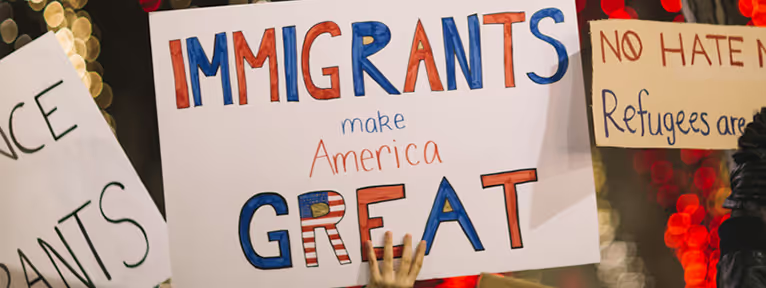
If one only looked at the historical data for an indication of this, the answer would be a resounding "yes." But immigration in a Trump-era America is uncertain at best. Members of Congress have put forth legislation that could change the categories of immigration and drastically reduce the number of visas granted across the board. Others are taking aim at certain family based categories. Confusion and uncertainty reign here; only time will tell.
Additional statistics and analysis provided by Pew Research Center and the Global Migration Data Analysis Centre, International Organization for Migration.
What is Form I-765?
Understanding Form I-765, Application for Employment Authorization.
USCIS Forms
The Form I-765 is a request for an Employment Authorization Document or EAD, which is more commonly known as a work permit.
If you will be in the U.S. temporarily and will need a job, you will likely have to file an EAD. Your “work permit”, as you can see below, will be a standard wallet-sized card with some basic information including your picture, full name, alien registration number, terms and conditions of your permit, and the expiration date.
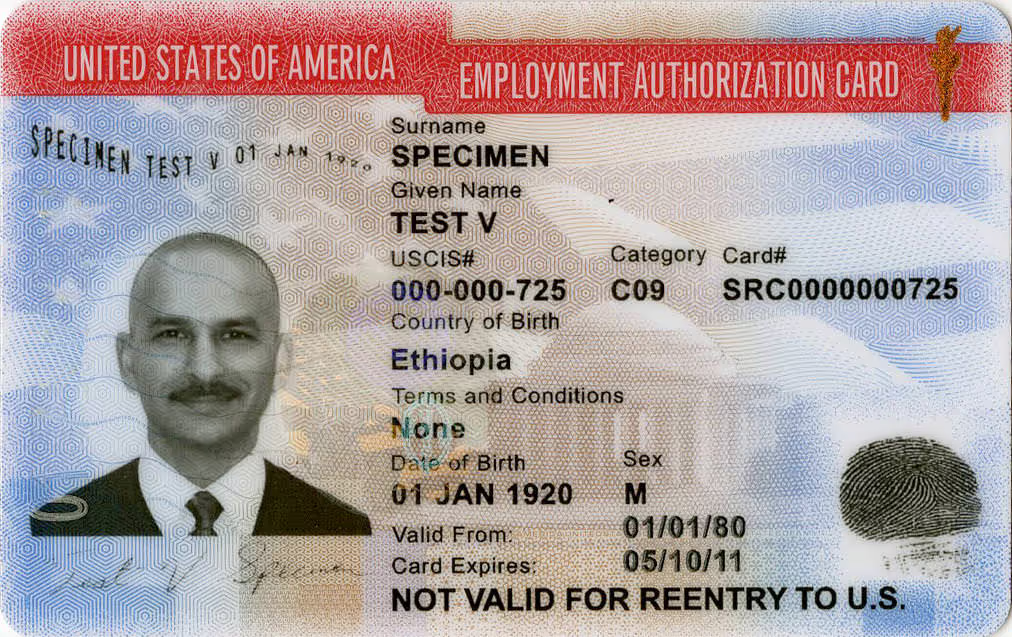
Be careful not to get this confused with a green card. A green card is evidence of your status as a Lawful Permanent Resident. An EAD may be obtained while your green card application is processing. This allows green card applicants to legally work before actually becoming a Lawful Permanent Resident. The EAD will also be used for temporary foreign workers who come for seasonal work or short term work assignments.
While the form is only 3 pages long, it comes with 25 pages of instructions. This form can be complicated. One of the most difficult parts of the I-765 is identifying which category of eligibility you are filing under. Consequently, the most common reason an I-765 is rejected is misidentifying eligibility. This article gives a brief outline of the I-765.
What is the purpose?
The EAD is proof of employment authorization. Immigrants who are eligible to work may file form I-765. Once approved for EAD, the applicant will obtain the identification card, which they can then use it to obtain employment. If you have previously filed this form but have lost your EAD or need to renew it, you should also file form I-765.
Who should (and shouldn’t) use this form?
The Eligibility Category section of the form will ask you to identify how you are eligible for work authorization. It asks you to select from one of the following 8 sections of eligibility:
- Asylee/Refugee and their spouses and/or children
- Nationality categories
- Foreign students
- Eligible dependents of diplomatic missions, international organizations, or NATO.
- Employment-based nonimmigrant categories
- Family-based nonimmigrants
- Adjustment of status categories
- Other categories
Within each section there are more specific sub-divisions. In order to accurately select your respective catagory, visit this USCIS page with I-765 instructions. These instructions will provide you with greater detail about each category.
If you fall into any of these three categories, you should NOT use this form:
- Lawful permanent resident
- Conditional resident
- Nonimmigrant with specific employment authorization through form 8 CFR 274a.12(b).
What is the filing fee?
The standard filing fee is $520 for paper filings. However, the filing fee may vary depending on the filing method used and the personal circumstances of the applicant. See Form I-1055, Fee Schedule or USCIS Fee Calculator for more specific fee information.
Any I-765 renewal requests associated with the original I-485 application are subject to a $260 filing fee if filed on or after April 1, 2024.
Will the fee be waived if I also file form I-485?
Previous to April 1, 2024, USCIS waived filing fees for Form I-765 applications filed concurrently with Form I-485 applications. However, a final fee rule that was implemented April 1, 2024 has since changed this. With this new rule, the fees for Form I-765 (and Form I-131) will no longer be waived when filing for adjustment (I-485). Rather, any I-765 filed concurrently with Form I-485 (on or after April 1, 2024) will be required to pay a Form I-765 filing fee of $520, unless eligible for a reduced fee.
Please note that in general, if you filed Form I-485 before April 1, 2024, and paid the required fee, you do not need to pay for Form I-765 or I-131 renewal filing fees while your Form I-485 is still pending.
Important notes
- You MUST use the approved edition date form or else it will not be accepted. Information about currently accepted edition dates, check here.
- Make sure you select the correct eligibility category for your situation. If you have any questions, don’t hesitate to reach out to us at SimpleCitizen for more help!
- Check to see if your catagory of eligiblity requires more documentation. Be sure to include it if it does!
Ways to fill out the Form I-765
Fill Out On a Computer
Download and view in a PDF viewer.
Download PDF
SimpleCitizen's Application Builder
Form I-765 is included with SimpleCitizen.
Get Started *Includes Attorney Review
Print & Fill Out Paper Form
Print the PDF and fill by hand with black pen.
Print PDF
Hire a Legal Professional
Find a legal professional to complete the form.
Visit AILA.com
Helpful Links
The Ultimate Guide on How to Get a Green Card
What is the Form I-765 filing fee?
Immigration Discussion Board
What is Consular Processing?
Learn about the Consular Process and how it serves as one of the most popular paths to a green card.
General Immigration Information
Updated: March 31, 2020.
"Consular processing" is the term used when applying for an immigrant visa from outside the U.S. You will be working with both U.S. Department of State and U.S. Department of Homeland Security as you finish your green card application. If you live outside the U.S. at the time of filing, consular processing may be your only path for immigrating to the U.S.
We are happy to help you through any step of this process. Finishing the whole green card process can be stressful and overwhelming. Don't worry though, contact us and we will be with you every step of the way.
Step 1: Determine your eligibility to immigrate and submit a petition
To get started, you need to determine if you're eligible to apply for a green card. Use our Eligibility Quiz to find if you are eligible to become a permanent resident of the United States. The petition that you file will be determined by the type of eligibility - most common petitions are the I-130, Petition for Alien Relative, and the I-140, Immigrant Petition for Alien Workers. The petition at this point in the process will be sent to U.S. Citizenship and Immigration Services.
Step 2: Await the decision on your immigrant petition
Once the appropriate person has filed the correct petition on your behalf, the next step is to wait for USCIS’s decision. If you are approved and you reside outside the United States: USCIS will send the approved petition to the Department of State’s National Visa Center. The petition will remain there until an immigrant visa number is available for you. For some cases, such as the spouse of a U.S. citizen, there are immigrant visa numbers immediately available.
Step 3: Submit with the National Visa Center
The National Visa Center (NVC) will notify you and your petitioner of three things:
- When they've received your visa petition
- When a visa is about to become available (if applicable)
- When and where to submit your immigrant visa processing fees and supporting documentation
The NVC will give you directions to set up an account where you can submit your fees and submit your application. This is also when you should file Form DS-260, Application for Immigrant Visa and Alien Registration. And in most cases, USCIS will also require the petitioner to file Form I-864, Affidavit of Support. The affidavit is the petitioner's promise to support you financially if you cannot support yourself.
The NVC is also collecting information on Public Charge. Certain applicants may be asked to present or complete a Form DS-5540 at the visa interview. Immigrant visa applicants are encouraged to complete the DS-5540 in advance. The USCIS will review all paperwork and request any additional evidence needed. If they request more evidence this can lengthen your processing time. In order to avoid this, it is important to be thorough in your initial submission.
Step 4: Go to your interview
Once those things happen, the consular office will schedule your interview.
When an appointment becomes available, the NVC will send an interview letter with information on the medical exam and a list of the required documents for the interview. During your interview a consular official will review your case and decide if you are eligible for an immigrant visa.
In some consular offices, you may get approved at the interview itself; in other cases, you will be asked to return to pick up your paperwork if you've been granted a green card. It depends on the policy of your local office.
Step 5: Once your visa is granted
Once you are notified that your visa has been granted, you will be given a packet of information known as a "visa packet". DO NOT OPEN THIS PACKET.
You will now need to pay the USCIS immigrant fee. Unless you are among the exemptions below, this fee must be paid; you will not be granted a green card without paying it.
Step 6: When you arrive in the U.S.
When you arrive in the United States, give your Visa Packet to the U.S. Customs and Border Protection officer at the port of entry. This officer will determine whether to admit you into the United States. If the officer admits you, you have been granted lawful permanent resident status and you may legally live and work in the United States. You should receive your green card within 45 days of your arrival.
Note: If the applicant does not enter within the six months allotted on the visa they may not be allowed into the country without further processing at the Consulate.
Welcome to America!
Trump's New Immigration Bill: What's The Point?
Understanding the basics of Trump's new immigration bill.
U.S. Immigration News
Last Updated: January 15, 2020
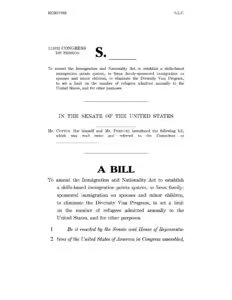
On August 3, 2017 Trump announced his support of S. 1720, a bill introduced by Senator Tom Cotton of Arkansas and co-sponsored by Senator David Perdue of Georgia, two Republicans. Trump said: “This legislation demonstrates our compassion for struggling American families who deserve an immigration system that puts their needs first and puts America first."He called it the “RAISE Act;” short for “Reforming American Immigration for a Strong Economy Act.”The RAISE Act was initially introduced to the Senate back in February and was referred to the Senate Judiciary Committee. It was then revised and reintroduced in August.Trump's adviser Stephen Miller and former adviser Steve Bannon promoted and helped shape the bill.
Many have dismissed this bill because it has not attracted any additional co-sponsors, and Republican leaders in Congress have no plans to vote on it in 2017. However, the bill remains relevant as it gives insight into the thoughts of the President and other leading figures on their ideal immigration system. Additionally, although this bill may not pass, it may influence another bill in the future.Section-by-section, the bill seeks to:
- Section 2: Eliminate the visa diversity lottery program
- Section 3: Enforce the 50,000 annual refugee cap. 84,995 refugees entered the US in 2016.
- Section 4: Narrow the meaning of “immediate relatives”.
- Section 5: Replace the employment-based immigration system with a points-based immigration system
- Section 6: Add one prerequisite for naturalization
These sections altogether would result in around a 30 percent reduction to green cards issued. Let’s take a look at each section in turn.(For more numbers on green cards, take a look at this frequently cited report.
SECTION 1: SHORT TITLE
It states the short title.This Act may be cited as the “Reforming American Immigration for a Strong Economy Act” or the “RAISE Act”.
SECTION 2: ELIMINATES THE DIVERSITY IMMIGRANT VISA PROGRAM
After Section 1, things start to get hairy quick. Section 2 eliminates the diversity visa program.The Diversity Immigrant Visa program, also known as the green card lottery, allows would-be immigrants to receive a United States Permanent Resident Card, or green cards, through a lottery system. This system was established in The Immigration Act of 1990.The lottery provides 50,000 green cards each year and aims to diversify the immigrant population in the United States. To do this it selects applicants from countries with low rates of immigration in the five years prior.Eligibility is determined by the applicant’s birth country, not country of residence. Section 2 eliminates all of that.
“(a) In General.—Section 203 of the Immigration and Nationality Act (8 U.S.C. 1153) is amended by striking subsection (c).”
SECTION 3: REMOVES EXCEPTIONS FOR THE ANNUAL REFUGEE CAP OF 50,000
Section 3 establishes a refugee cap of 50,000 that kind of, debatably, already existed. At the very least, it removes exceptions to the 50,000 rule.This section makes major changes to 8 U.S.C. 1157. 1157 says: the number of refugees who may be admitted may not exceed fifty thousand . . . unless the President determines . . . that admission of a specific number of refugees in excess of such number is justified by humanitarian concerns or is otherwise in the national interest.But that clause apparently only applied to a few years in the early eighties. Ever since then Presidents have been welcoming however many refugees they want.(Take a look here for refugee numbers.)Also, President Trump has tried to cap the refugee intake at 50,000 in various ways already. So again, at the very least, this bill eliminates the options for the President to raise the cap for “grave humanitarian concerns” or the “national interest.” The new code would read:
“(1) IN GENERAL.—The number of refugees who may be admitted under this section in any fiscal year may not exceed 50,000."
Also, an interesting change: special discretionary decision-making power is transferred from the Attorney General to the Secretary of Homeland Security. So the Secretary of Homeland Security would be able to admit any refugee who is not firmly resettled in any foreign country, is determined to be of special humanitarian concern to the United States, and is otherwise admissible as an immigrant.
SECTION 4: LIMITS THE REACH OF FAMILY SPONSORED VISAS
This section primarily narrows the meaning of “immediate relative.” It effectively removes family-visa pathways for siblings and adult children of U.S. citizens and permanent residents to apply for permanent residency status in the U.S. It limits the family path to spouses and minor children.It redefines “immediate relative” as spouse and children under 18 years old. Whereas before it included children up 21, parents, and siblings.
“Family-sponsored immigrants described in this subsection are qualified immigrants who are the spouse or a child of an alien lawfully admitted for permanent residence.”
It allows for 88,000 immigrants minus the number of aliens paroled that did not depart and did not acquire the status of an alien lawfully admitted. It also deals with some rather complicated things like how many of these visas are subject to country limitation and when the visa of a dependent parent can be extended.
SECTION 5: REPLACES THE EMPLOYMENT-BASED IMMIGRATION SYSTEM WITH A POINTS BASED IMMIGRATION SYSTEM
Section 5 establishes a point-system which would replace the employment-based system with the points based system. This is one of the more innovative or creative sections; the system is surprisingly simple. Notably, the caliber of immigrants accepted under the current employment-based system is already remarkably high. So, If the points-based system were implemented then a sufficiently large number of applicants would accrue enough points to maintain a large applicant pool — a large enough pool to keep the number of employment sponsored green cards the same.Raise keeps the current level of employment visas which is 140,000.
“(1) IN GENERAL.—The worldwide level of points-based immigrant visas issued during any fiscal year may not exceed 140,000."
The points system invites any qualifying applicant to apply for submission into the eligible applicant pool. Applicants apply online and pay a $160 fee. An applicant is eligible if they accrue over 30 points. The applicants with the highest point counts are then siphoned off the top every six months until 140,000 people are admitted.Selected applicants are invited to submit another application which would include valid documentation, an attestation from the prospective employer, the annual salary being offered, a declaration that the job position is new or vacant, health insurance records, and a fee of $345.If the applicant is accepted, spouses, minor children, and dependent adult children can also be issued a visa.In regards to the points, the goal is to accrue 30 points. Points are allotted by status in each category.
Would You Qualify for Legal Immigration to the U.S.?
Answer the following questions to find out:
Age:
- 0–17: Ineligible
- 18–21: 6 points
- 22–25: 8 points
- 26–30: 10 points
- 31–35: 8 points
- 36–40: 6 points
- 41–45: 4 points
- 46–50: 2 points
- 51 and older: No points
Education:
Points are awarded only for the highest degree obtained.
- US or foreign high school: 1 point
- Foreign bachelor’s degree: 5 points
- US bachelor’s degree: 6 points
- Foreign master’s degree in STEM: 7 points
- US master’s degree in STEM: 8 points
- Foreign professional degree (including MBA, JD, or MD) or doctorate in Stem: 10 points
- US Professional degree or doctorate in stem: 13 points
English Language Proficiency:
Points are awarded for decile placement in IETSL or TOEFL.
- 1st–5th deciles: 0 points
- 6th–7th deciles: 6 points
- 8th decile: 10 points
- 9th decile: 11 points
- 10th decile: 12 points
Extraordinary achievements
- Nobel Laureate or has received comparable recognition in a field of scientific or social scientific study: 25 points
- Earned an individual Olympic medal or placed first in an international sporting event within the last 8 years: 15 points
- None 0 points
Job Offer
Points are awarded for job offers with high monetary compensation.
- Annual salary 150%–200% of median household income of state: 5 points
- Annual salary 200%–300% of median household income of state: 8 points
- Annual salary 300% and above of median household income of state: 13 points
- No Job Offer 0 points
Investments
- Applicant agrees to invest $1,350,000 in a new commercial enterprise in the US: 6 points
- Applicant agrees to invest $1,800,000 in a new commercial enterprise in the US: 12 points
- No Investment 0 points
Family preference
- The applicant previously qualified for the once valid family preference visa category: 2 points
Requirement
- An applicant is ineligible if he doesn’t have a degree higher than a bachelor’s degree and he is not in the 6th decile or higher for English proficiency.
Spousal consideration
- If an applicant’s spouse would accrue higher points, then no change is made to the applicant’s points. However, if the spouse would accrue lower points, then 70% of the applicant’s points would be added to 30% of the spouse’s points, and this new number would be considered
Minimum Score: 30
You must be at least 18 years old and have at least 30 points to be eligible to apply for immigration, according to proposed legislation.
SECTION 6: CHANGES THE PREREQUISITE FOR NATURALIZATION
Section 6 mostly does some housekeeping to an already standing section of US code. However, at the end, it adds a term that disqualifies from naturalization people who have outstanding debts owed to the federal government.And that’s the RAISE Act explained section-by-section. We’ll see what bill comes next for immigration.
How Immigrant Entrepreneurs are Making America Great Again
How Immigrant Entrepreneurs are Making America Great Again
General Immigration Information
Last Updated: January 15, 2020.
In polls, Americans and immigrants alike overwhelmingly cite economic opportunities as the number one reason people choose to immigrate to the United States (74%). About half of Americans believe that once immigrants are here, their talents, experiences and hard work strengthen our nation and in particular improve food, music, and the arts while around a quarter of Americans say they have a friend or relative who has recently immigrated to the U.S. While many can agree that immigrants have the potential to add economic, cultural, and social value to a place, some U.S. cities have gone as far as declare that immigrants are "imperative" to their continued growth and success.
It is no secret that both our nation's demographics and economic mainstays are changing. More and more baby boomers continue to retire and less and less babies are being born, so it naturally follows that the native-born American workforce is shrinking. Globalization has taken a toll on domestic manufacturing companies, something that American metropolitan areas have been tied to in the past. Those deft enough to notice these changes and recognize their consequences are making plans to adapt and are turning to immigrants for the answer.

According to a report by the American Immigration Council, "Cities and regions looking to stem population decline and stimulate economic growth are seeking to attract immigrants and encourage immigrant entrepreneurship. Immigrants play an important role in establishing “main street” businesses (retail, accommodation and food services, and neighborhood services), which are important for generating neighborhood-level economic growth and revitalization.” The numbers support this claim with immigrants making up about 13 percent of the country’s total population, 16 percent of the labor force, 18 percent of business owners, and a whopping 28 percent of “main street” business owners nationally.
After recognizing that immigrants run the majority of shops in the "Little Village", with the second highest business tax revenues in the city, Chicago, Illinois decided to embrace this entrepreneurial vibrancy with their "New Americans Plan". With the tagline, "Chicago Welcomes the World", this plan espouses the goal of making Chicago the most immigrant-friendly city in the world. An advisory committee made up of 50 business, academic, civic, philanthropic, community and immigrant advocacy leaders meet regularly to develop immigrant-friendly strategies and ensure Chicago’s status as a "vibrant and welcoming international city". Initiatives from this committee range from the creation of a small business incubator and the promotion of tourism in immigrant neighborhoods to parent engagement centers and city employee cultural sensitivity training.
Around the same time, Dayton, Ohio launched the "Welcome Dayton" plan involving over 100 members of the community which states, “communities across America are at a crossroad: to welcome and integrate new residents and help them on a path to citizenship, or to allow old stereotypes, fears and misconceptions to hinder future success.” In order to capitalize on the economic potential in its immigrant-dense neighborhoods, Dayton community leaders provide education to all potential entrepreneurs about the many local services that are available to help make their ideas a reality.

In Nashville, Tennessee which is considered to be a relatively new immigrant destination, nonprofits and community-based organizations such as Tennessee Immigrant and Refugee Rights Coalition (TIRRC) and Conexión Américas have led the way in the promotion of immigrant entrepreneurship. The city has focused on three inter-dependent areas of integration: social, economic, and civic. Nashville has even established the Mayor’s New Americans Advisory Council and the Mayor's Office of New Americans (MONA) with a goal to give "New Americans the tools they need to access economic and educational opportunities—to the benefit of all Nashvillians.”
A fourth and more recent example took place last year, when Salt Lake City Mayor Ben McAdams and Salt Lake City Chamber President Lane Beattie announced the "New Americans Task Force", aimed to welcome and encourage foreign-born entrepreneurs in the state of Utah. According to Mayor McAdams, "Welcoming people here is not only the compassionate thing to do for our community, but it also brings resiliency and vibrancy to our economy. We all know that our country, and especially our state, is growing rapidly. It turns out that much of that growth is due to a jump in the percentage of residents who were foreign-born. They are adding to our strong economy." This bold move to reshape local business and government policy makes sense knowing that immigrants contributed $8 billion to Salt Lake County in 2014 alone.
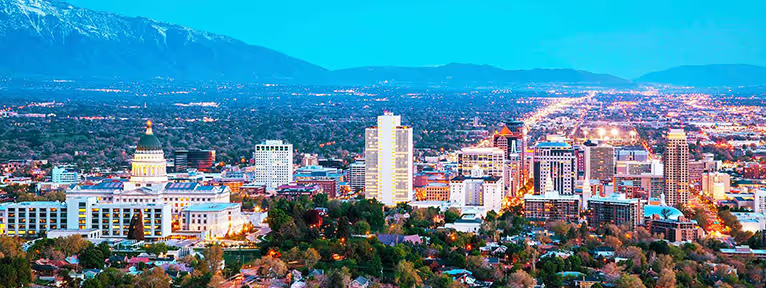
The Queen of Alterations
One woman, who immigrated to Bountiful, Utah, just north of Salt Lake City, from the Philippines at age 32, felt welcomed and encouraged by her community to follow her dream and run a business as a seamstress.

Ever since she was a little girl, Leilani Drumm loved to sew. "As a kid, I would find paper and cut out a little dress. I ended up getting a degree in accounting but all I really wanted to do was sew." When Leilani followed her new husband to his military base in Utah, she held jobs at a variety of places, including the military base and later a factory and a department store. When Leilani's husband sustained a back injury and was forced to change careers, money became very tight. As Leilani put it, " At first I had nothing here - life was really hard." Things changed when Leilani's friend, a recent immigrant from Japan, told her about the alteration business she'd started. Leilani was confident in her skills because she knew she could do more than just small alterations, she was a dressmaker. That friend went on to encourage Leilani in a conversation that she refers to as a stepping stone, "She really helped me get out of my shell." Shortly before her idea became a reality, Leilani found out that she was pregnant. "I call her my lucky baby. I got pregnant, then I got the business, and that was the start of everything!" That was almost 19 years ago. "Now my daughter is going to college and I am able to support her with my same business and it's such a blessing."
Leilani has largely felt comfortable and welcomed in her community. The people, she says, are what she likes the best about living in America. "They're all just really nice. If I ever have a problem here I know they will help me right away because they know me already." That same kindness is what seems to be the key to her shop's success. "To start a business, first of all, you need to be friendly! A lot of the people keep coming back and they tell me not to go anywhere - they like me a lot." Leilani is not exaggerating, either. Many of her customers bring business from across county lines and some even travel from out of state. In a business that mostly gains customers through word of mouth, connection is crucial. Leilani feels it's important to try and relate to the challenges her customers are having. "Most of my customers have troubles in their life and sometimes they're depressed about something. I tell them they can just come to my shop one day and we can talk about it. Sometimes I will even take them to lunch. I try to help them with their feelings. I really do listen and I think that's the best way to be connected to people." Policemen or veterans are especially welcome at Leilani's with a special rate. She also tries to give discounts in a situation where she can tell money is tight because she says she "understands their feelings".
Of course working with people all day isn't always easy. "I really like my job but it can be stressful with all the wedding dresses and before prom. There's always one customer out of a hundred each year that's really hard to deal with. But usually my customers are really thankful and seeing them really happy with the work I did, is payment enough. When I see my wedding dresses from start to finish, I really am so happy and proud that I can do that for people." It's not just Leilani's personal skills that keep her customers returning, but the quality of her work. Most of her competitors only do little alterations that don't last very long. "There's a cleaner near the post office and they even bring their work to me because they know I just want to do the job right!", she laughs and adds, "I don't think they know how to sew..."
Leilani's advice to new entrepreneurs is trite but true, "You have to work really hard. Just go, go, go, until you get what you want. Trust in yourself and in your abilities. Don't think negative things, only positive things. Don't be afraid. The more you walk forward and do hard things, I think you can make it." Just listening to Leilani makes it clear that it doesn't hurt to love what you're doing, either. "As long as you are happy with what you are doing, you will be successful. If you're new here, follow your dream! Go forward. Find what's good for you and don't stop." Leilani is clearly speaking from experience of the past two decades being a labor of love as she concludes after a brief moment of reflection, "I think this is my dream."
A Legacy of Entrepreneurship
Hugo grew up on a little ranch in Matatenas Vallecillo, Nuevo León, Mexico, about an hour south of the Laredo Texas border. As a nine year old, Hugo lost his father and had to drop out of school to help support his family and newly single mother. As an eighteen year old, with very broken English and only a 2nd grade education, Hugo decided to immigrate to the United States. Hugo went where the work was, which led him to Michigan, both North and South Dakota - pretty much every state where people were picking. He eventually landed in Richgrove, California to pick grapes where he would meet and marry his Wasco-native wife, Mary.

Hugo was a quick learner and a hard worker and soon became a foreman for local farm labor contractor, Bob Fortune. He was Bob's loyal employee for years and years, until one day, seemingly without warning, Hugo was let go. At the age of 47 with a mortgage and three young kids at home, Hugo knew he had to figure things out and fast. Mary told her husband that he needed to start his own business and simply go to the farmers and tell them he would bring the crews from now on. Thinking they had no money and knowing the risks, Hugo was understandably very scared but his dear wife wasn't ready to give up. Unbeknownst to Hugo, she had secretly saved $10,000 for such a time as this. With the encouragement of his strong and loving partner, he approached each farmer individually and asked for their business. His reputation as a man with a tireless work ethic served him well and farmer after farmer agreed to pay him. It was never Hugo's dream to start his own business, but he felt like it was his only choice and he rose to the challenge. Night after night, Mary and Hugo would return from the fields to go over all the paperwork and make sure the numbers were right. Hugo didn't know accounting but he was naturally good with numbers. Mary only had a 10th grade education. But together, they figured it out and eventually did well enough where they could hire bookkeepers to keep track of everything. They may not have known pricing strategies or cash flow statements but they knew exactly how many boxes of harvest per row it takes to fill a bin to the brim. They may not have known business but they knew their business and that was enough. Enough to gross over $10 million a year and oversee up to 350 employees at any given time. Much like his teams in the vineyards, Hugo continued to meticulously prune and craft his business for over 36 years. At 83, Hugo passed away, having truly worked every day up until the very end of his life.
Mary is now retired but the business has stayed in the family, under the direction their son, Roel. For two people who never "meant" to be entrepreneurs, they have set quite the pattern for their three children, who have started and owned four different successful businesses at various points in time. One of their children, Victor, attributes this to the fact that "We're pretty independent people. A big part of it is probably that we don't like other people telling us what to do. We like the challenge of starting something from nothing and trying to grow it." A challenge that seems in many ways even more daunting for the previous generation. "I can't imagine going to another country and trying to start a new business while trying to take care of my family." Victor speaks honestly, clearly in awe of what his parents were able to achieve. He continues, "My dad never talked to us about 'business'. But what we've learned most from watching my parents is work ethic - how to spend your time wisely and earn a living. They grew up so poor and when they saw that they could do better, they never wanted that to go away - they just wanted to work. And that's what they did." As an uneducated immigrant who struggled with English his entire life, Hugo often felt different from the community in which he lived and worked. Although Victor never felt that same isolation, he noticed it in his father and saw how ownership of a business affected Hugo in more than just economic ways. "I think it took my dad quite a long time to adjust...It probably wasn't until he was successful in his business that he started to feel comfortable with who he was in America."
He noted yet another benefit was the great sense of love and unity between his parents. "Starting the business was tough on their marriage of course, but they got through it together and my mom always loved and supported my dad until the day he passed." In an attempt to summarize these impactful memories and experiences into a digestible moral of sorts, Victor repeats a similar theme to Leilani. "Anything you want in life, you can make it happen. You just have to visualize it, and go after it. I know a lot people worry about how they are going to pay the bills - that story was my dad. But he found a way, he and my mom. I think the most important part of this was my mom. If it wasn’t for her telling him he could do it, he would have never done it. I think that’s true in life, when you have a good partner, you can make anything happen."

Individuals who are living in communities with immigrants are 36% more likely to feel positively about immigrants than those who say there are no immigrants living in their community. This seems intuitive enough, doesn't it? Familiarity tends to increase understanding. When these immigrants are our neighbors, our friends, our brother-in-laws, our florists, we are more prone to recognize their strengths and celebrate their successes. We are more prone to reap the benefits of diversity if they are nearby- if we are grabbing a delicious gyro on our commute home from work or if we are looking forward to the traditional dance and music shows at the Asian festival on the weekend. Viewing the one million plus newcomers each year as a lump sum, as opposed to widely diverse individuals with widely diverse backgrounds, interests, and aptitudes, leads to both misunderstandings and misrepresentations of the situation at hand. Perhaps the best way to change the perception of immigrants as burdens to that of important contributors is to remove the plural and let each person share their own story.
What is Class of Admission on Form I-90?
Learn about Class of Admission on Form I-90.
USCIS Forms
Last Updated: January 15, 2020.
Filling out government forms is never a walk in the park, and mistakes can lead to costs and delays. Confidence in what kind of information your I-90 application is asking for takes a lot of stress out of your submission. Off the tops of our heads, most of us don’t know what our “class of admission” is, so let’s start with that.

Your Class of Admission is asked on Item Number 14 on your Form I-90. Essentially this 3-digit code identifies the category of your lawful residence status. For example, you could be identified as a "Self Petition unmarried son/daughter - of US Citizen - Family Sponsored First Preference" aka B16, or a "Brother or sister of a country-region place U.S. citizen" (F41). There are hundreds of 3-digit codes that correspond with each of these categories, the complete USCIS list can be found here, but the best way to know how you were classified is to look at your Permanent Resident Card under Category. It is typically one or two letters followed by a single number.
To be clear, this states the status under which you were granted permanent residence, not the category that you entered the United States under. If you have more questions about form I-90, check out this article.
Michelle: My Immigration Story
Read to learn more about Michelle's Immigration Story.
General Immigration Information
Last Updated: January 15, 2020.
The journey began in Mexico right before Christmas. My mother picked me and my sister up early from school one day. I remember my sister and I were overjoyed to see her because she was usually busy with work and didn't have time to pick us up from school. I was only seven years old then, and I had no idea my life was about to change forever. Everything seemed normal as I packed a small backpack when I got home, and I still didn't know we were leaving when my mother gave me and my sister and early Christmas present that night right before we boarded a Greyhound bus. I think it all started to sink in when I arrived in Utah and I saw the snow falling. I had never seen snow before. It was cold but I ran around trying to catch it as it fell in flurries to the ground. We were in America now, and we were going to make it our home.

My first challenge was learning English. The kids at my elementary school crowded around me during recess and lunch and kept trying to get me to talk to them. They would hold up basketballs, or point at chairs and ask me questions. I had no idea what they wanted, and the professors didn't know what I needed either. I would often make gestures to get permission to go to the bathroom, or mimic what I heard my classmates say even if I had no idea what the words meant. My mother was having similar problems. She walked up and down the grocery store aisles not knowing what kind of food she was getting or what the cashier was telling her. It got worse when my sister and I began speaking our school learned English at home, which wasn't very good, but much more advanced than the English my mother spoke. My mother had no idea what we were saying to each other. That was when she decided we all had to learn to speak, read, and write English. She signed me and my sister up for a special reading class during the school year and a summer reading program. My mother also began volunteering at our local library and joined me and my sister when we attended the library activities. She did reading and writing homework with us and would go out of her way to speak English with whoever would listen. She even joined the PTA of my elementary school to practice her speaking with my teachers and peers. She did this for years, and I remember my mom gave a lesson to my technology class when I was in jr. high. She still spoke with a heavy accent, but her reading and writing skills were as strong as mine by that time, and she understood English just as well.

I was about fourteen years old when my mother got remarried, but it was not until I was in high school that we began thinking seriously about getting our green cards. Up until then, we had been undocumented and hadn't thought much of changing our legal status, but I was starting to think about furthering my education and realized that I didn't have a social security number and could not apply for admittance to universities or for loans to help me pay tuition. Without a green card, my education would end after high school not because I didn't want to study, but because I couldn't apply. I discussed my worries with my mother. She listened and decided that it was time to get our green cards.
My mother began asking her friends for help. Most of them told her to look it up online. When she ran a search for green cards a huge list of attorneys came up. All of them were asking for high amounts of fees to fill out forms and get appointments. The prices ranged from 400-1500 dollars just to start the applications. We didn't have that kind of money. My mother was a cleaning lady and we hardly had enough to make it from month to month. There was no way we could hire an attorney. She told me and my sister about how hopeless it all seemed as she drove us home from school one day, and we all got scared and I began to cancel all of my plans to further my education. This broke my mother's heart. She didn't come all the way to America for us to give up. We had to find a way to obtain our green cards and eventually citizenship.
My mother found a Hispanic center close to our home and it was there that she found out about the USCIS.gov website. It was free and had instructions on what forms to fill, documents to gather, and steps to take in order to get a green card. While my sister and I went to school she went to the library and the computer there to read the instructions and print forms. If she didn't understand something she would get a library assistant to help. She also called and visited the USCIS field office and visited the local Hispanic Center frequently for more complicated questions. She had to gather her previous divorce papers, all of our birth certificates, passports, and other documents that were listed in the instructions. What I remember the most was when we all had to get our vaccinations up to date. My sister and I only had to get the tuberculosis test because we had been going to school and needed to get shots regularly, but my mother had to get almost seven shots in one doctor's visit. We also visited the Mexican Consulate to gather documents and have more questions cleared up. I remember that every Sunday my mother would sit on her bed and fill out forms and put together folders. Sometimes I sat on the bed and helped her out.
Overall, it took us two years to gather everything we needed. We each had our own folder stuffed with forms and documents. We mailed them in and waited. We were afraid and one time my mother sat me and my sister down and explained that because we had been undocumented for some years, there was a small chance that we might get deported for a year before we got our green cards, but that we should not be afraid. After six months we got the letters for our interviews. Our cases had been processed and if we did well in the interview we would get out green cards. We woke up early, dressed up in our nicest clothes, and did our hair. We arrived at the time we were scheduled and waited in a large room filled with chairs. A few others were in the waiting room with us, all looking as nice and nervous as us. We waited for two hours before they called us in. My mother, step-father, sister, and I walked in. The room was a small and very short man with glasses sat at the other side of a desk. He called us all by name to make sure we were all present. He looked at my mother and said, "Everything looks ok. We have all of your documents." We all smiled, and I remember I clutched my hands tightly together on my lap. He continued his speech. "I just have one question for you. Do you have any kind of proof that you all do things as a family? Do you have family passes or memberships to parks or events that you can show me?" We all looked at each other. We went to the movies every weekend, went swimming, had dinner together, and went to church but we had no way of proving it. My mother thought for a minute and then opened up her wallet. She pulled out a membership for the Clark Planetarium in Salt Lake City. My step-father, sister, and I followed her lead and pulled out our memberships too. The man smiled. "Alright. Congratulations," he said, and we all took a sigh of relief. My mother almost began to cry and she asked the man if she could give him a hug. He politely denied and shook all of our hands instead. We all hugged each other when we reached the parking lot and laughed and decided to go out to dinner to celebrate and we smiled and celebrated again when our green cards arrived in the mail a couple of months later. All the time, effort, and persistence paid off and my mother, sister, and I were finally permanent residents of the United States.
That victory was seven years ago, and thanks to my mother's hard work I am now about to graduate from Brigham Young University and my sister has a good job and has bought a house with her new husband. Currently, we are all going through the process of getting our citizenship. This has been much easier. Again, my mother has done all the work herself with the help of the USCIS.gov website. Since we are all adults now, we were able to work and save money to pay the necessary fees in about a year. Just the other day we all received our appointments for our interviews where we will turn in our green cards and be sworn in. My sister and I don't have to take a government or language test because we went through the public school system, but my mother got a list of books to get so she can begin studying for her exams. The books are inexpensive and she is excited to look over them and study when they arrive in a couple of weeks. Again, we are all a bit nervous but we are also relieved that we were able to get this far with free resources and hard work.

